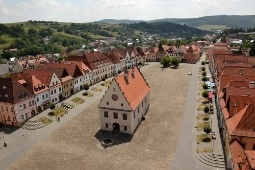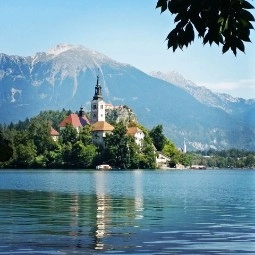|

|
|
Egypt
Last time visited: April 2018
Population: 95.7 million (2016)
Language: Modern Standard Arabic
Domain extension: .eg
Electricity: 220 V; 50 Hz; plug type C/F (Schuko)
Wikipedia Egypt
Products that are being sold in Egypt, need to comply with the requirements of the Egypt Conformity Assessment Programme. Regulated products need to comply with mandatory standards. The Regulated Product list includes (but is not limited to) textiles, food, electrical products, health and beauty products, toys, tableware, lighting and sanitary.
The route to conformity is enforced by the General Organisation for Export and Import Control (GOEIC).
The steps to achieve compliance for registered products are:
- Document Evaluation
- Product registration
- Inspection and random testing
- Certificate of Conformity
More info here.
|
|


|
|
England
Last time visited: September 2018
Population: 55.6 million (2017)
Language: English
Domain extension: .co.uk
Electricity: 230 V; 50 Hz; plug type G
England is as part of the United Kingdom also part of the European Economic Area (EEA). Product safety within the EEA is regulated by CE marking.
For more information, see the section European Economic Area.
On March 29th 2019, the UK will exit the European Union and thus also the EEA. Until that date, all CE rules will continue to apply until the UK has left the Single Market.
Standards in the UK are developed by BSI. BSI also owns Kitemark, a UK product and service quality certification mark.
|
|


|
|
Estonia
Last time visited: -
Population: 1.3 million (2016)
Language: Estonian
Domain extension: .ee
Electricity: 230 V; 50 Hz; plug type C/F (Schuko)
Wikipedia Estonia
Estonia is part of the European Economic Area (EEA). Product safety within the EEA is regulated by CE marking.
For more information, see the section European Economic Area.
|
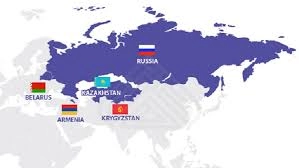 |
|
Eurasian Economic Union
Last time visited: May 2018
Population: 176 million (2016)
Languages: Russian, Belarusian, Armenian
Electricity: 230 V; 50 Hz; plug type C/F (Schuko)
Armenia, Russia, Kazakhstan, Kyrgyzstan and Belarus are part of the Eurasian Economic Union (website). The product safety procedure is very similar to that of the European Union (CE marking). Product groups that are regulated are, amongst others, machinery, toys, electromagnetic equipment, low voltage equipment, radio equipment, pressure equipment, toys, medical devices, personal protective equipment, food etc.
The steps to achieve compliance are:
- Identify applicable directive(s)
- Identify the applicable requirements of the Directive(s)
- Identify an appropriate route to conformity
- Assessment of the product's conformity
- Compile the technical documentation
- Make a Declaration and affix the EAC Mark
Other remarks:
- National differences may exist between the member states of the Eurasian Economic Union.
- From the 1st of July 2018, the Energy Efficiency Directive came into force.
- From 2021 Medical Devices will be regulated similarly to how they are regulated in the European Union.
|
|
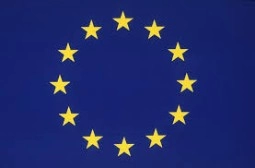

|
|
European Economic Area
Last time visited: July 2018
Population: 513.7 million (2015)
Domain extension: .eu
Languages EU: Bulgarian, Croatian, Czech, Danish, Dutch, English, Estonian, Finnish, French, German, Greek, Hungarian, Irish, Italian, Latvian, Lithuanian, Maltese, Polish, Portuguese, Romanian, Slovak, Slovenian, Spanish, Swedish
Electricity: 230 V; 50 Hz; plug type C/E/F/G/J/K/L
Product safety within the EEA is arranged by CE marking. CE marking is mandatory for certain product groups sold within the EEA (the 28 member states of the EU plus EFTA countries Iceland, Norway and Liechtenstein) and Turkey and Switzerland. Product groups that are regulated are, amongst others, machinery, toys, electromagnetic equipment, low voltage equipment, radio equipment, pressure equipment, toys, medical devices, personal protective equipment etc. If a product does not fall within the scope of a CE directive, then the General Product Safety Directive applies (download the general product safety directive pdf here).
The steps to achieve compliance are:
- Identify applicable directive(s) and product safety standards
- Identify the applicable requirements of the directive(s)
- Identify an appropriate route to conformity
- Assess of the product's conformity
- Compile the technical documentation
- Make a Declaration and affix the CE Mark
When you want to sell an existing product on the European market, you should:
- Verify that your product and the technical documentation (such as test reports) comply with the requirements.
- If necessary, conduct/complete the applicable conformity assessment procedure.
- Compile the technical file, draw up the Declaration of Conformity and affix the EAC mark.
Some differences with the US:
- Within the EU, product safety standards are voluntary and are a way to meet the requirements of the Directives. In the US standards are mandatory.
- In the EU, product liability has been defined by the Directive on Liability for Defective Products. The United States has not established common law and has set no product liability regulation. All 50 states have individual standards that define product liability.
|
|


|
|
Finland
Last time visited: November 2018
Population: 5.5 million (2016)
Languages: Finnish, Swedish, Sami
Domain extension: .fi
Electricity: 230 V; 50 Hz; plug type C/F (Schuko)
Wikipedia Finland
I visited Finland in October/November 2018 for the STVY conference, where I had to speak. Topic: How Can You Legally Publish Your User Instructions Online.
Finland is part of the European Economic Area (EEA). Product safety within the EEA is regulated by CE marking.
For more information, see the section European Economic Area.
|
|


|
|
France
Last time visited: July 2014
Population: 67.2 million (2017)
Language: French
Domain extension: .fr
Electricity: 230 V; 50 Hz; plug type C/E
Wikipedia France
France is part of the European Economic Area (EEA). Product safety within the EEA is regulated by CE marking.
For more information, see the section European Economic Area.
|
|


|
|
Germany
Last time visited: Currently residing
Population: 82.7 million (2016)
Language: German
Domain extension: .de
Electricity: 220-240 V; 50 Hz; plug type C/F (Schuko)
Wikipedia Germany
Germany is part of the European Economic Area (EEA). Product safety within the EEA is regulated by CE marking.
For more information, see the section European Economic Area.
Other remarks:
- Although not mandatory, in Germany, a TüV testing mark is considered to be a trustworthy mark.
- Also, the GS mark (Geprüfte Sicherheit) is a common and voluntary certification mark for technical equipment.
- Besides CE Directives, there are non-CE Directives such as the REACH, packaging and WEEE Directive. In Germany, WEEE equipment should be registered (for example at EAR) and packaging should be registered via for example Grüner Punkt.
|
|


|
|
Greece
Last time visited: December 2017
Population: 10.8 million (2017)
Language: Greek
Domain extension: .gr
Electricity: 230 V; 50 Hz; plug type C/F (Schuko)
Wikipedia Greece
Greece is part of the European Economic Area (EEA). Product safety within the EEA is regulated by CE marking.
For more information, see the section European Economic Area.
|
|


|
|
Hungary
Last time visited: July 2003
Population: 9.8 million (2017)
Language: Hungarian
Domain extension: .hu
Electricity: 230 V; 50 Hz; plug type C/F (Schuko)
Wikipedia Hungary
Hungary is part of the European Economic Area (EEA). Product safety within the EEA is regulated by CE marking.
For more information, see the section European Economic Area.
|
  |
|
Italy
Last time visited: July 2017
Population: 60.6 million (2017)
Language: Italian
Electricity: 230 V; 50 Hz; plug type C/F/L
Wikipedia Italy
Italy is part of the European Economic Area (EEA). Product safety within the EEA is regulated by CE marking.
For more information, see the section European Economic Area.
|
|


|
|
Ireland
Last time visited: February 2013
Population: 6.6 million (2016)
Language: Irish, English, Ulster Scots
Domain extension: .ie
Electricity: 230 V; 50 Hz; plug type G
Wikipedia Ireland
Ireland is part of the European Economic Area (EEA). Product safety within the EEA is regulated by CE marking. For more information, see the section European Economic Area.
|
 |
|
Israel & the Palestinian Territories
Last time visited: May 2016
Population: 8.9 million (2018)
Language: Hebrew, Arabic (recognized)
Domain extension: .il
Electricity: 230 V; 50 Hz; plug type C/H
Wikipedia Israel
In Israel, standards for regulated products are developed by the Standards Institution of Israel (SII). This national standards body is responsible for the testing of domestic and imported products for compliance according to the Israeli standards.
Israel is a member of the Organization for Economic Co-operation and Development.
Israel has free trade agreements with the United States, the European Union and the European Free Trade Association.
|
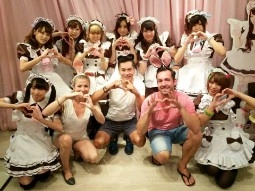 |
|
Japan
Last time visited: October 2015
Population: 126.7 million (2017)
Language: Japanese
Domain extension: .jp
Electricity: 100 V; 50 Hz; plug type A/B
Wikipedia Japan
Products that are sold in Japan fall into two categories:
- Products to which technical regulations/mandatory standards apply, and
- Products to which non-mandatory voluntary standards apply
Compliance with the regulations and standards is governed by a certification system. An inspection will point out if approval is granted. Once a product is approved, the product can bear a mandatory quality mark or a voluntary quality mark. Also the product's packaging,markingorlabelingmaybesuibject to regulation. Although there is a trend of in Japan of moving towards harmonization with international standards, there are still many Japan-specific mandatory standards that even have not been translated into English.
The Japan Industrial Standards Committee (JISC) plays a central role in the standarisation process.
|
 |
|
Jordan
Last time visited: May 2016
Population: 10.2 million (2018)
Language: Arabic
Domain extension: .jo
Electricity: 230 V; 50 Hz; plug type C/D/F/G/J
Wikipedia Jordan
Goods, products, and services that are sold in Jordan are subject to product safety regulation. The issuing, approving, reviewing and monitoring the implementation of standards and regulations is the responsibility of The Jordan Standards and Metrology Organization (JSMO). They also grant conformity certificates (including the Quality Mark).
Other important facts:
- Jordan is a member of the Greater Arab Free Trade Area
- Jordan signed an association agreement with the European Union
- Jordan has signed free trade agreements with the United States, European Free Trade Association, and Singapore
- Jordan is also a member of the World Trade Organization.
|
|

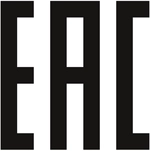
|
|
Kazakhstan
Last time visited: January 2019 (planned)
Population: 18 million (2016)
Language: Kazakh and Russian
Domain extension: .kz
Electricity: 220 V; 50 Hz; plug type C/F (Schuko)
Wikipedia Kazakhstan
Partner:
Kazakhstan is, together with Russia, Armenia, Kyrgyzstan and Belarus part of the Eurasian Economic Union (website). The product safety procedure is very similar to that of the European Union (CE marking). Product groups that are regulated are, amongst others, machinery, toys, electromagnetic equipment, low voltage equipment, radio equipment, pressure equipment, toys, medical devices, personal protective equipment, food etc.
The steps to achieve product safety compliance for Armenia are:
- Identify applicable directive(s)
- Identify the applicable requirements of the Directive(s)
- Identify an appropriate route to conformity
- Assessment of the product's conformity
- Compile the technical documentation
- Make a Declaration and affix the EAC Mark
For more information, see the section Eurasian Economic Union.
|
|


|
|
Kyrgyzstan
Last time visited: January 2019 (planned)
Population: 6 million (2016)
Language: Kyrgyz and Russian
Domain extension: .kg
Electricity: 220 V; 50 Hz; plug type C/F (Schuko)
Wikipedia Kyrgyzstan
Partner:
Kyrgyzstan is, together with Armenia, Russia, Kazakhstan and Belarus part of the Eurasian Economic Union (website). The product safety procedure is very similar to that of the European Union (CE marking). Product groups that are regulated are, amongst others, machinery, toys, electromagnetic equipment, low voltage equipment, radio equipment, pressure equipment, toys, medical devices, personal protective equipment, food etc.
The steps to achieve product safety compliance for Armenia are:
- Identify applicable directive(s)
- Identify the applicable requirements of the Directive(s)
- Identify an appropriate route to conformity
- Assessment of the product's conformity
- Compile the technical documentation
- Make a Declaration and affix the EAC Mark
For more information, see the section Eurasian Economic Union.
|
|


|
|
Latvia
Last time visited: January 2004
Population: 1.9 million (2016)
Language: Latvian
Domain extension: .lv
Electricity: 230 V; 50 Hz; plug type C/F (Schuko)
Wikipedia Latvia
Partner:
Latvia is part of the European Economic Area (EEA). Product safety within the EEA is regulated by CE marking.
For more information, see the section European Economic Area.
|
|


|
|
Lithuania
Last time visited: -
Population: 2.8 million (2016)
Language: Lithuanian
Domain extension: .lt
Electricity: 230 V; 50 Hz; plug type C/F (Schuko)
Wikipedia Lithuania
Partner:
Lithuania is part of the European Economic Area (EEA). Product safety within the EEA is regulated by CE marking.
For more information, see the section European Economic Area.
|
|


|
|
Luxembourg
Last time visited: June 2012
Population: 602,000 (2018)
Language: Luxembourgish, French, German
Domain extension: .lu
Electricity: 230 V; 50 Hz; plug type C/F (Schuko)
Wikipedia Luxembourg
Partner:
Luxembourg is part of the European Economic Area (EEA). Product safety within the EEA is regulated by CE marking.
For more information, see the section European Economic Area.
|
 |
|
Mauritius
Last time visited: November 2011
Population: 1.26 million (2016)
Language: English and French
Domain extension: .mu
Electricity: 230 V; 50 Hz; plug type C/G
Wikipedia Mauritius
Product safety standards in Mauritius are developed by the Mauritius Standards Bureau (MSB). Accredation to certification bodies is provided by the Mauritius Accredititation Service (MAURITAS). Accreditation is voluntary in Mauritius as it is very open to international compliance. The island collaborates with economies such as the European Union, Australia and the United States, and with bodies such as COMESA, SADC, UN and OECD.
Imported regulated products shall be accompanied by a Certificate of Conformity. This document must be submitted to the MSB for certification. When there is no Certificate a company can obtain a test report for the MSB. After approval the products can be sold.
|
 |
|
Monaco
Last time visited: June 2000
Population: 38,400 (2015)
Language: French
Domain extension: .mc
Electricity: 230 V; 50 Hz; plug type C/E/F
Wikipedia Monaco
Monaco is not in the European Union, nor part of the EEA. However, Monaco has arrangements with big brother France and works closely with the EU to simplify the relations. For instance, Monaco is a member of the EU customs area through an agreement with France, and is administered as part of France.
The economy is open to trade and Monaco's customs regulations conform to French and EU policies.
|
 |
|
Myanmar
Last time visited: September 2013
Population: 53.6 million (2017)
Language: Burmese
Domain extension: .mm
Electricity: 230 V; 50 Hz; plug type A/C/D/G/I
Wikipedia Myanmar
Myanmar has not passed any specific product safety legislation dealing with product liability. However, some laws regulate certain aspects of product liability of which the Consumer Protection Law (2014) is the most significant one.
The Consumer Protection Law aims on securing safe products by imposing prison sentences for those selling unsafe and low quality goods.
Myanmar seems to lack a general mandatory recall power.
Myanmar is part of the Association of Southeast Asian Nations (ASEAN). See ASEAN section for more information.
|
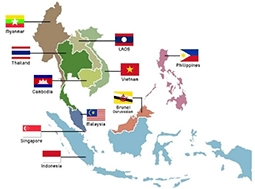
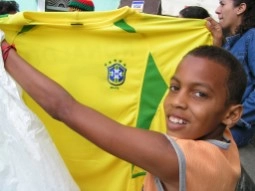














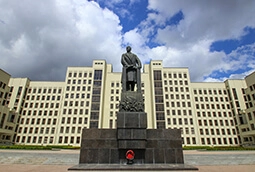

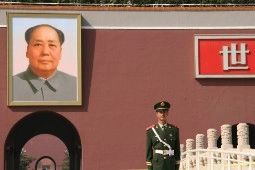





















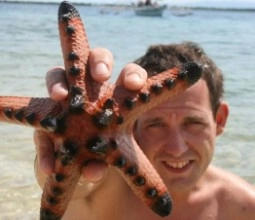


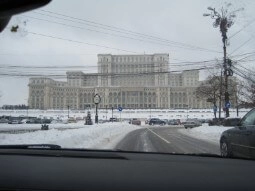
.webp)

